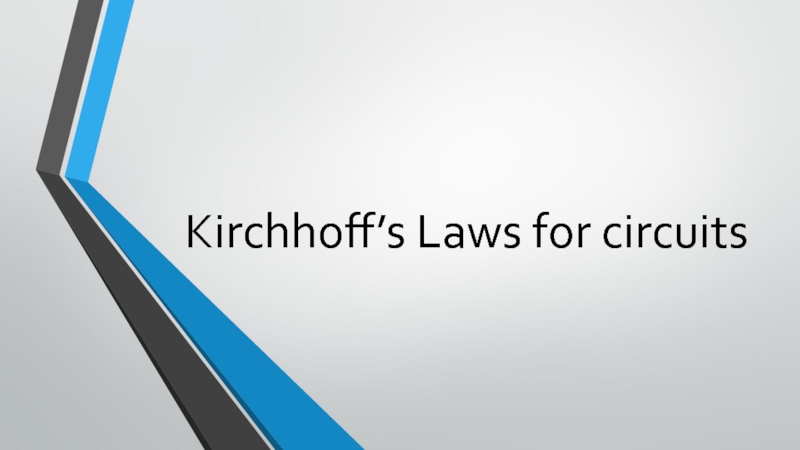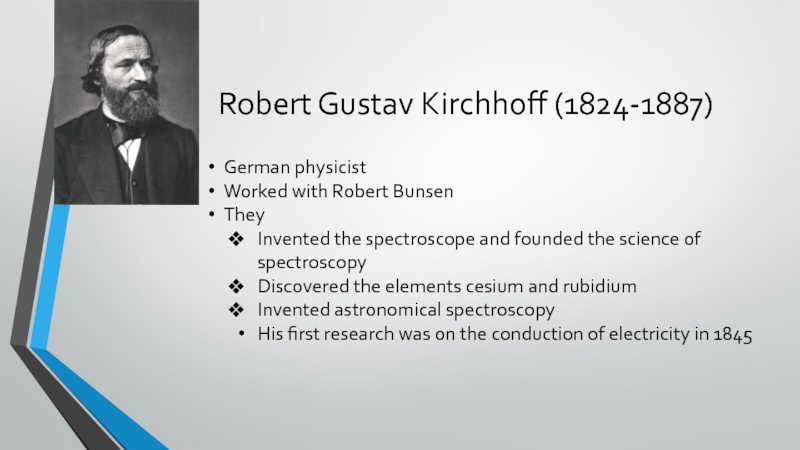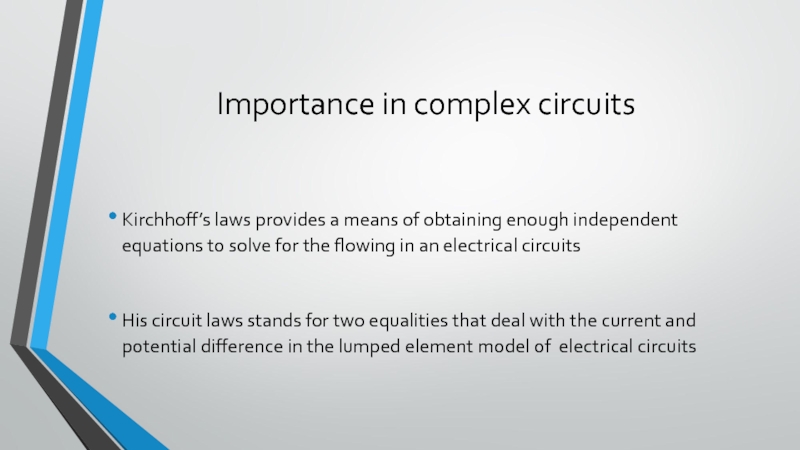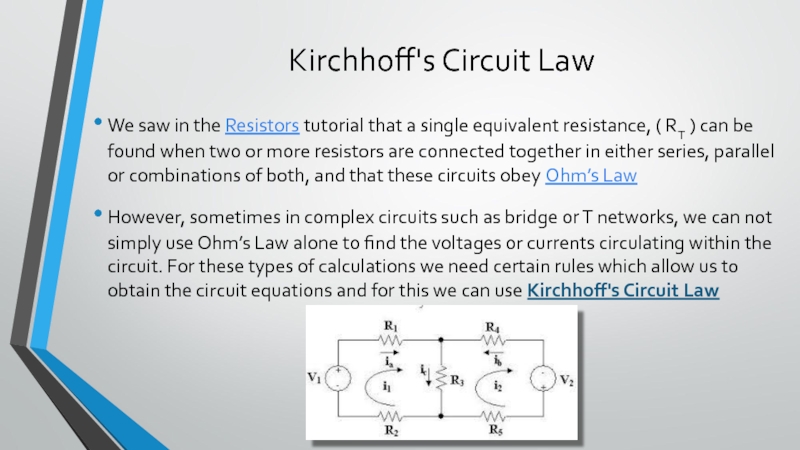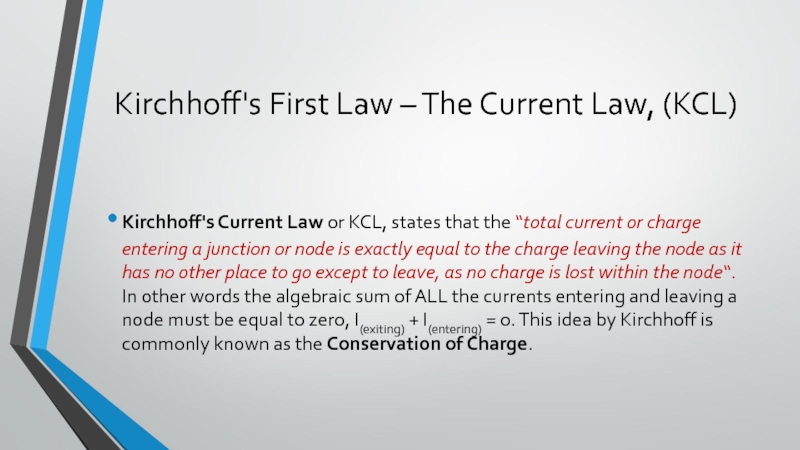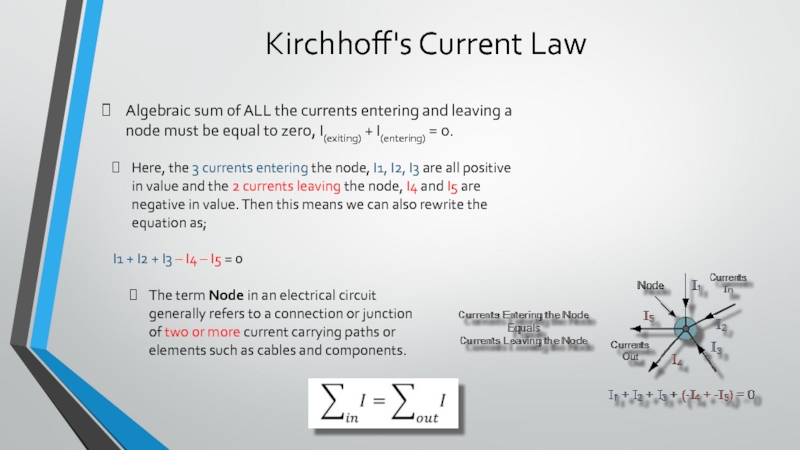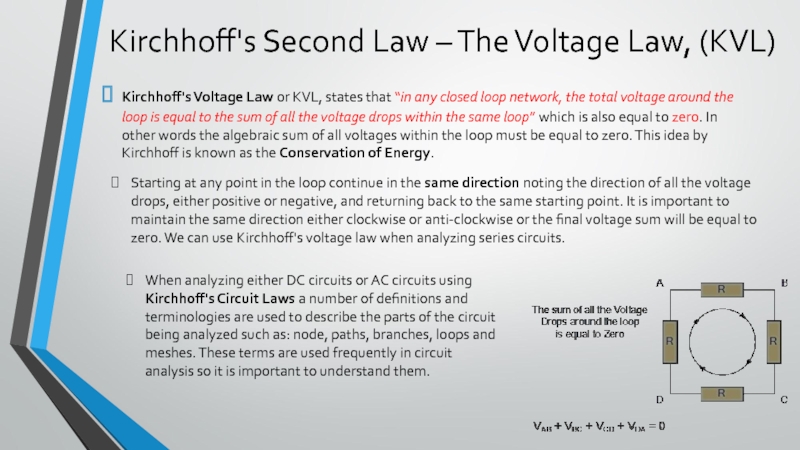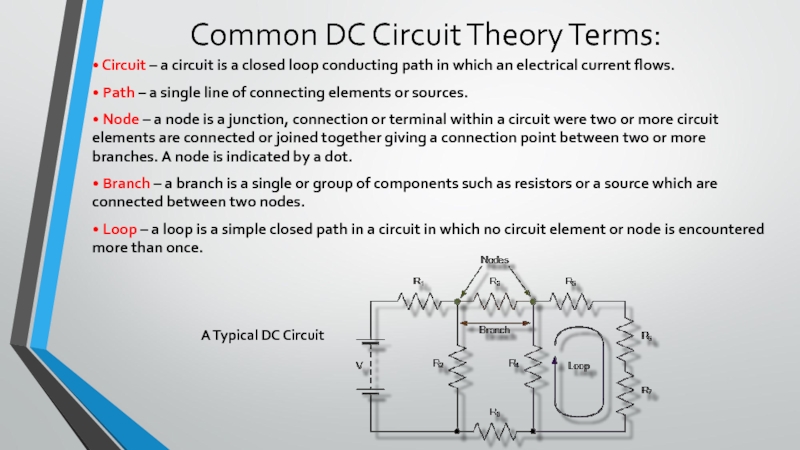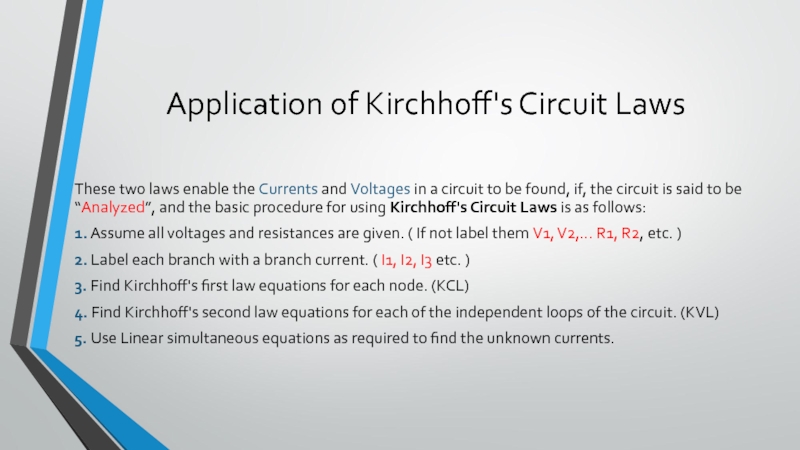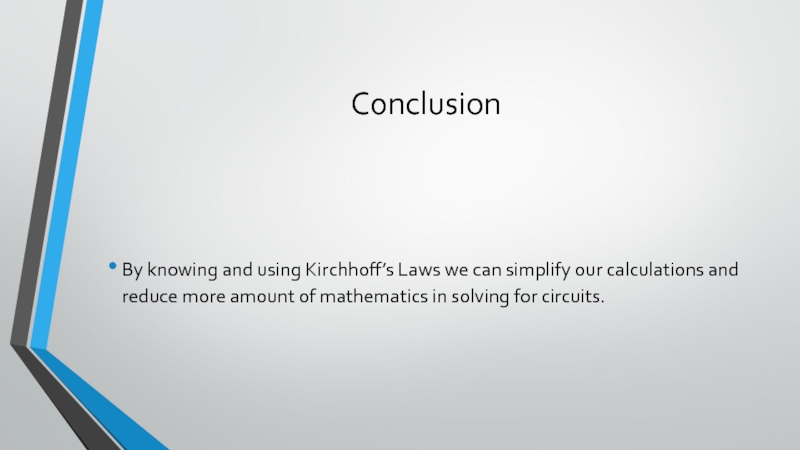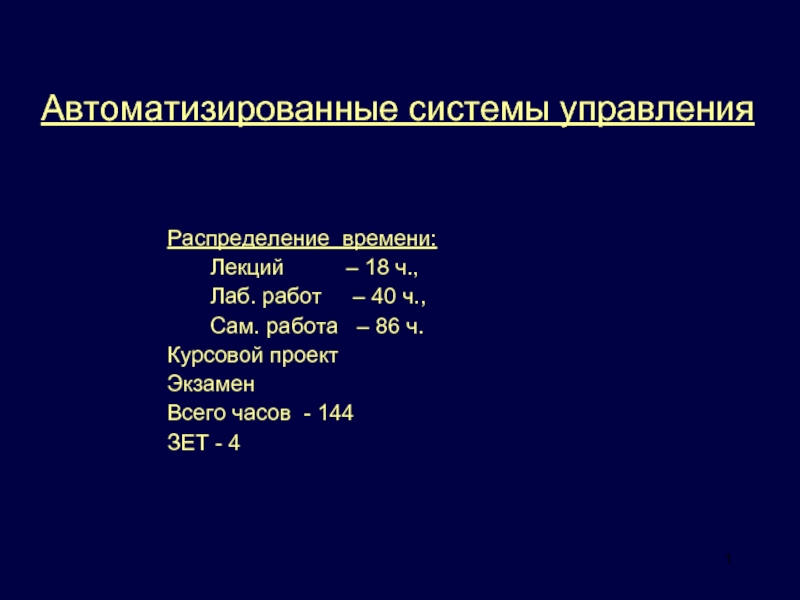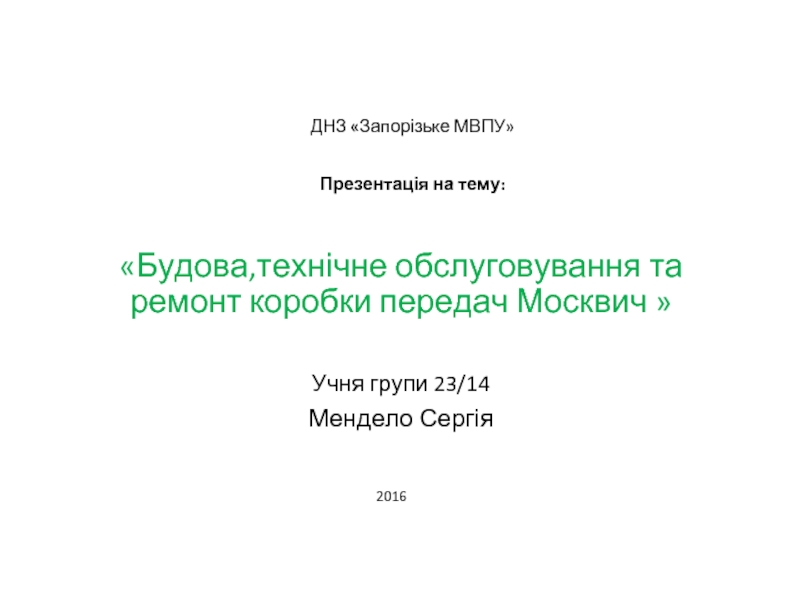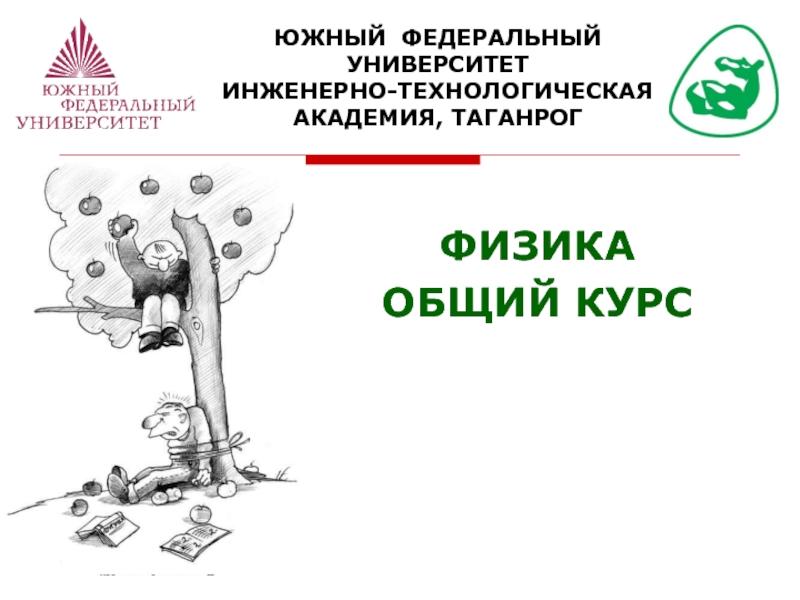- Главная
- Разное
- Дизайн
- Бизнес и предпринимательство
- Аналитика
- Образование
- Развлечения
- Красота и здоровье
- Финансы
- Государство
- Путешествия
- Спорт
- Недвижимость
- Армия
- Графика
- Культурология
- Еда и кулинария
- Лингвистика
- Английский язык
- Астрономия
- Алгебра
- Биология
- География
- Детские презентации
- Информатика
- История
- Литература
- Маркетинг
- Математика
- Медицина
- Менеджмент
- Музыка
- МХК
- Немецкий язык
- ОБЖ
- Обществознание
- Окружающий мир
- Педагогика
- Русский язык
- Технология
- Физика
- Философия
- Химия
- Шаблоны, картинки для презентаций
- Экология
- Экономика
- Юриспруденция
Kirchhoff’s Laws for circuits презентация
Содержание
- 1. Kirchhoff’s Laws for circuits
- 2. Robert
- 3. Importance in complex circuits Kirchhoff’s laws provides
- 4. Kirchhoff's Circuit Law We saw in the
- 5. Kirchhoff's First Law – The Current Law,
- 6. Kirchhoff's Current Law Algebraic sum of ALL
- 7. Kirchhoff's Second Law – The Voltage Law,
- 8. Common DC Circuit Theory Terms: • Circuit
- 9. Application of Kirchhoff's Circuit Laws These two
- 10. Conclusion By knowing and using Kirchhoff’s Laws
Слайд 2 Robert Gustav Kirchhoff (1824-1887)
German physicist
Worked
They
Invented the spectroscope and founded the science of spectroscopy
Discovered the elements cesium and rubidium
Invented astronomical spectroscopy
His first research was on the conduction of electricity in 1845
Слайд 3Importance in complex circuits
Kirchhoff’s laws provides a means of obtaining enough
His circuit laws stands for two equalities that deal with the current and potential difference in the lumped element model of electrical circuits
Слайд 4Kirchhoff's Circuit Law
We saw in the Resistors tutorial that a single
However, sometimes in complex circuits such as bridge or T networks, we can not simply use Ohm’s Law alone to find the voltages or currents circulating within the circuit. For these types of calculations we need certain rules which allow us to obtain the circuit equations and for this we can use Kirchhoff's Circuit Law
Слайд 5Kirchhoff's First Law – The Current Law, (KCL)
Kirchhoff's Current Law or
Слайд 6Kirchhoff's Current Law
Algebraic sum of ALL the currents entering and leaving
Here, the 3 currents entering the node, I1, I2, I3 are all positive in value and the 2 currents leaving the node, I4 and I5 are negative in value. Then this means we can also rewrite the equation as;
I1 + I2 + I3 – I4 – I5 = 0
The term Node in an electrical circuit generally refers to a connection or junction of two or more current carrying paths or elements such as cables and components.
Слайд 7Kirchhoff's Second Law – The Voltage Law, (KVL)
Kirchhoff's Voltage Law or
Starting at any point in the loop continue in the same direction noting the direction of all the voltage drops, either positive or negative, and returning back to the same starting point. It is important to maintain the same direction either clockwise or anti-clockwise or the final voltage sum will be equal to zero. We can use Kirchhoff's voltage law when analyzing series circuits.
When analyzing either DC circuits or AC circuits using Kirchhoff's Circuit Laws a number of definitions and terminologies are used to describe the parts of the circuit being analyzed such as: node, paths, branches, loops and meshes. These terms are used frequently in circuit analysis so it is important to understand them.
Слайд 8Common DC Circuit Theory Terms:
• Circuit – a circuit is a
• Path – a single line of connecting elements or sources.
• Node – a node is a junction, connection or terminal within a circuit were two or more circuit elements are connected or joined together giving a connection point between two or more branches. A node is indicated by a dot.
• Branch – a branch is a single or group of components such as resistors or a source which are connected between two nodes.
• Loop – a loop is a simple closed path in a circuit in which no circuit element or node is encountered more than once.
A Typical DC Circuit
Слайд 9Application of Kirchhoff's Circuit Laws
These two laws enable the Currents and
1. Assume all voltages and resistances are given. ( If not label them V1, V2,… R1, R2, etc. )
2. Label each branch with a branch current. ( I1, I2, I3 etc. )
3. Find Kirchhoff's first law equations for each node. (KCL)
4. Find Kirchhoff's second law equations for each of the independent loops of the circuit. (KVL)
5. Use Linear simultaneous equations as required to find the unknown currents.
